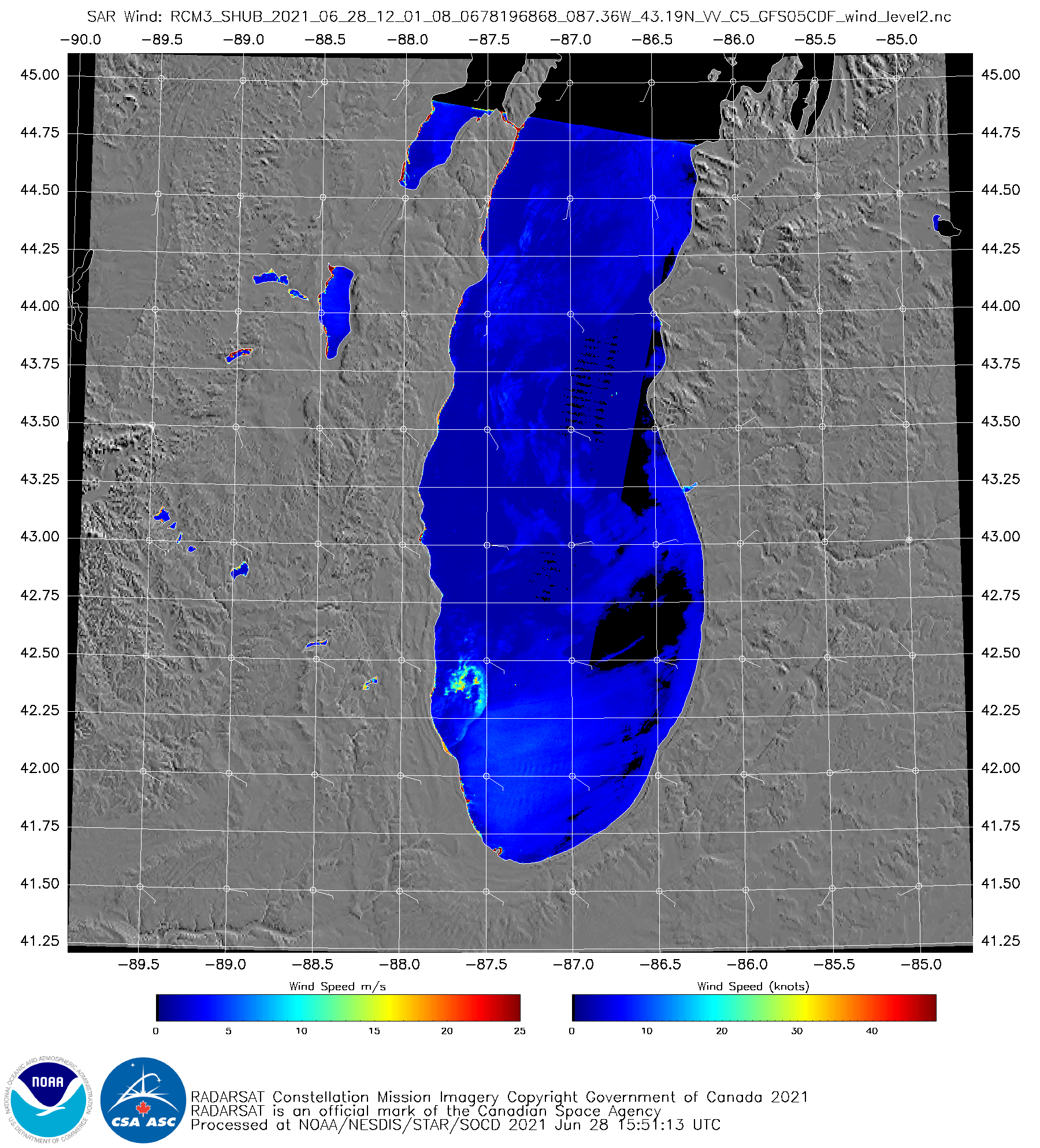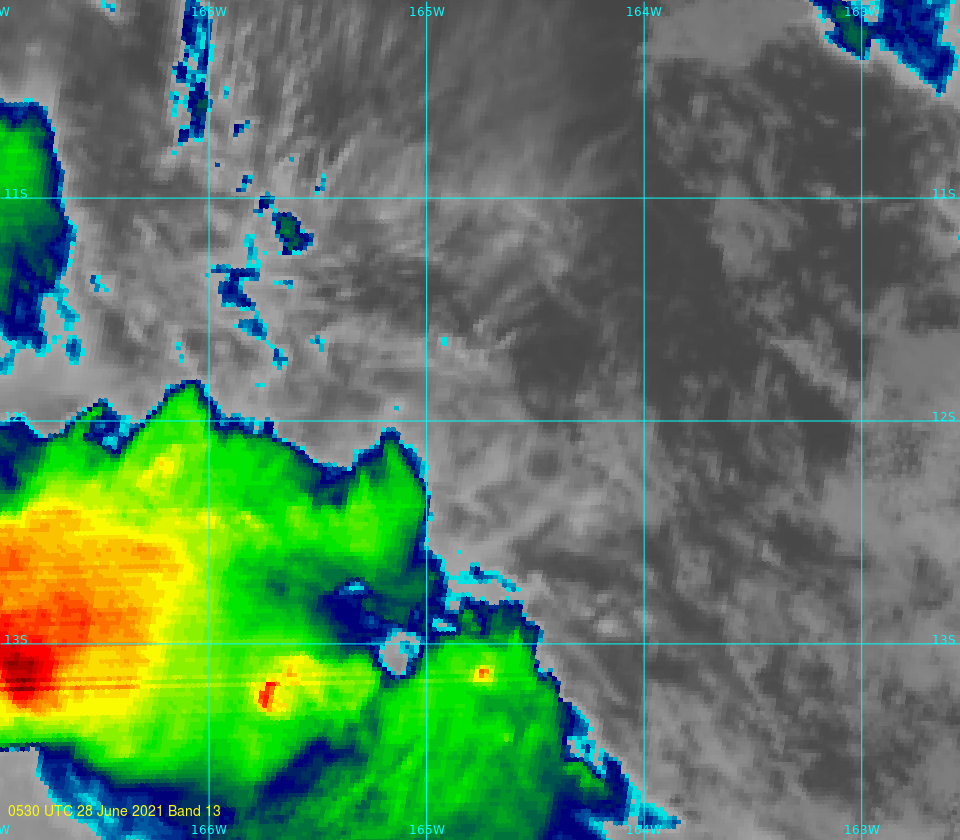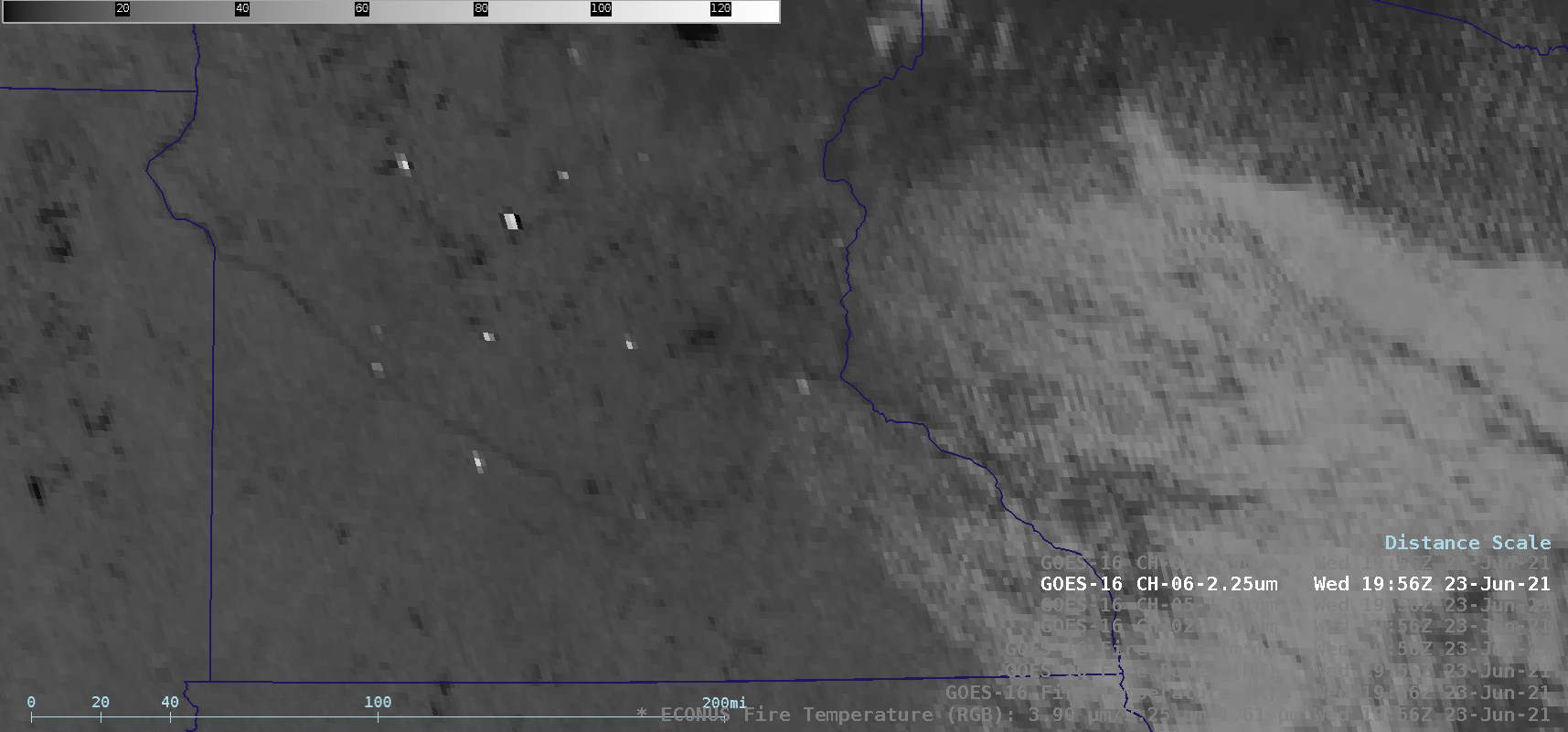RADARSAT Constellation Mission 3 (RCM3) Synthetic Aperture Radar (SAR) wind data over southern Lake Michigan at 1201 UTC on 28 June, above (click to enlarge, taken from this website), shows a small region of strong winds just offshore of southeast Wisconsin and northeastern Illinois. GOES-16 Band 2 visible imagery (clipped from the CSPP Geosphere website, click here for the direct link to the imagery — valid until mid-July) shows modest convection just off the Wisconsin/Illinois shorelines.

CSPP Geosphere visualization of GOES-16 Visible (Band 2, 0.64) imagery, 1200 UTC on 28 June 2021 (Click to enlarge)
Winds from the Sullivan WI (WFO MKX) radar, below, (courtesy John Gagan, SOO), show a similar structure. The challenge in comparing the SAR winds and the radar winds: The Sullivan radar beam in that location is about 5000 feet above the surface. Storm-relative velocities are about 20 kt.

1201 UTC WFO MKX Radar display showing Base Reflectivity (upper left), Storm Relative Velocities (upper right), ZDR (Lower left) and Base velocities (lower right). Beam angle of 0.5 degrees. (Click to enlarge)
View only this post Read Less







![GOES-17 Shortwave Infrared (3.9 µm) images, with hourly surface temperatures plotted in yellow [click to play animation | MP4]](https://cimss.ssec.wisc.edu/satellite-blog/images/2021/06/G17_SWIR_TEMPS_PACNW_26_27JUN2021_B7_2021179_010117_GOES-17_0001PANEL_FRAME0000445.GIF)
![GOES-17 True Color RGB mages [click to play animation | MP4]](https://cimss.ssec.wisc.edu/satellite-blog/images/2021/06/GOES-17_ABI_RadC_true_color_2021178_024117Z.png)


